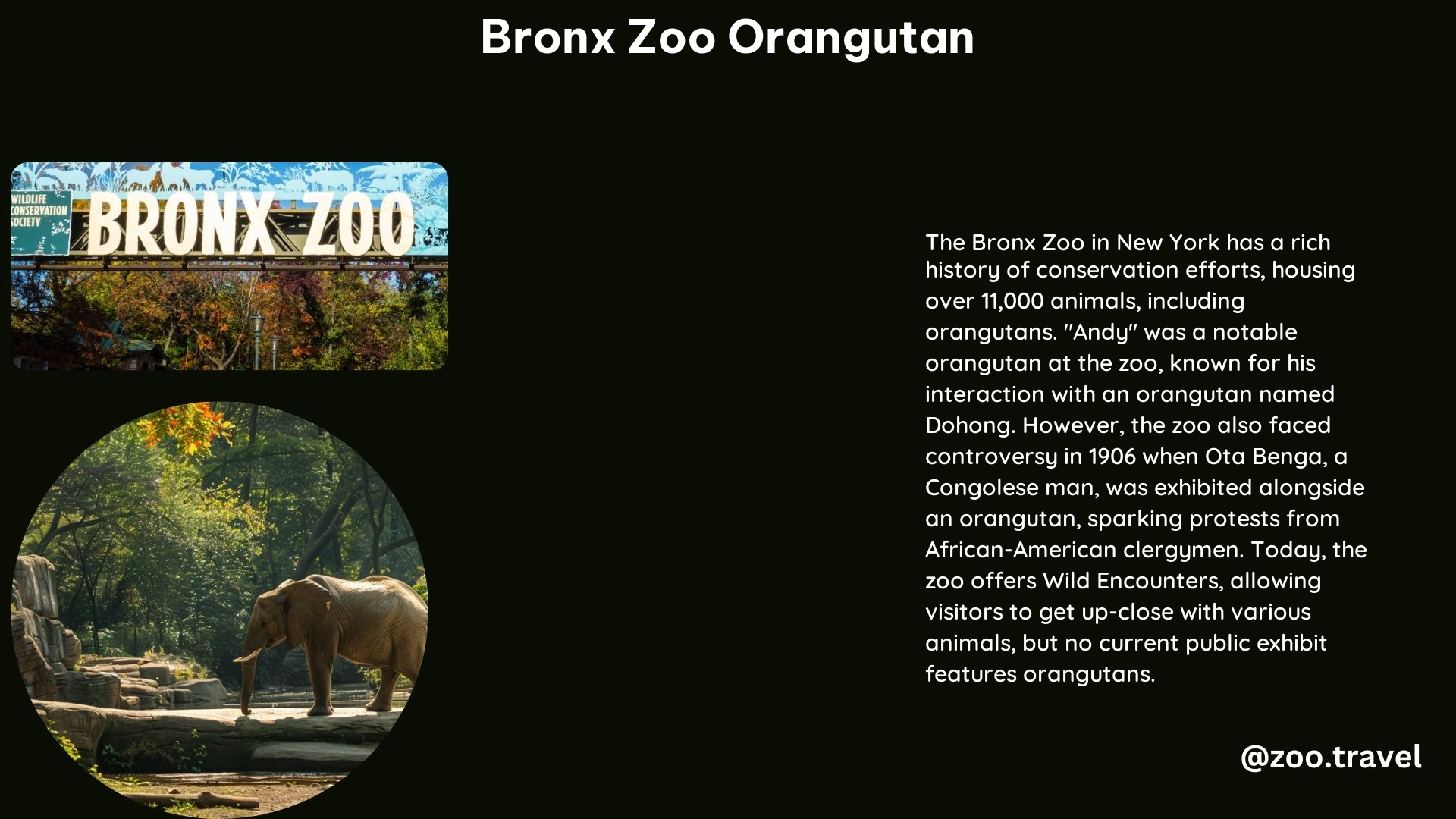The Bronx Zoo is home to a diverse array of animals, including the captivating orangutans. These great apes have captured the hearts and imaginations of visitors for decades, and the Bronx Zoo’s orangutan population is no exception. From their unique physical features to their fascinating behaviors, the Bronx Zoo orangutans are a true highlight of any visit to this renowned zoological institution.
The Bronx Zoo Orangutan: An Iconic Resident
The Bronx Zoo has a long and storied history with orangutans, dating back to the early 20th century. One of the most famous residents was a male orangutan named “Andy,” who was featured on a postcard from the zoo in the early 1900s. While Andy is no longer with us, the Bronx Zoo continues to be home to a thriving population of these remarkable primates.
Physical Characteristics of the Bronx Zoo Orangutans

Orangutans are the largest arboreal (tree-dwelling) mammals in the world, with adult males weighing up to 200 pounds and standing up to 4 feet tall. They are known for their distinctive reddish-orange fur, which helps them blend in with the foliage of their native Southeast Asian rainforests. The Bronx Zoo’s orangutans share these physical traits, with their long, powerful limbs and opposable thumbs allowing them to effortlessly navigate the trees and engage in a variety of complex behaviors.
Habitat and Behavior of the Bronx Zoo Orangutans
In their natural habitat, orangutans are solitary and spend the majority of their time in the trees, constructing elaborate nests and foraging for a variety of fruits, leaves, and other plant matter. The Bronx Zoo’s orangutans are provided with a spacious, naturalistic enclosure that mimics their native environment, complete with lush vegetation, climbing structures, and enrichment activities to stimulate their natural behaviors.
| Behavior | Description |
|---|---|
| Arboreal Locomotion | Bronx Zoo orangutans use their long, powerful limbs to effortlessly swing from branch to branch, demonstrating their exceptional agility and balance. |
| Nest Building | These great apes construct intricate nests high up in the trees, using leaves, branches, and other materials to create a comfortable resting place. |
| Foraging | Bronx Zoo orangutans spend a significant portion of their day foraging for a variety of fruits, leaves, and other plant-based foods, showcasing their adaptations for a primarily vegetarian diet. |
| Social Interaction | While generally solitary in the wild, the Bronx Zoo’s orangutans engage in occasional social interactions, such as grooming and play, with their fellow residents. |
Conservation Efforts at the Bronx Zoo
The Bronx Zoo is deeply committed to the conservation of orangutans and other endangered species. The zoo’s scientists have been studying mountain gorillas since 1959, and the Congo Gorilla Forest exhibit was designed to connect the zoo’s work with field research and conservation efforts in the wild.
Through educational programs, research, and advocacy, the Bronx Zoo plays a vital role in raising awareness about the threats facing orangutans and other great apes, such as habitat loss, poaching, and the illegal pet trade. Visitors to the zoo can learn about these important conservation initiatives and how they can support the protection of these remarkable primates.
Visiting the Bronx Zoo Orangutans
The Bronx Zoo is open year-round, and visitors can enjoy the opportunity to observe the zoo’s orangutans in their naturalistic enclosure. The Congo Gorilla Forest exhibit, which is home to the orangutans, is open from March to December and features a ⅓-mile trail that allows visitors to get up close and personal with these fascinating creatures.
For those looking to have an even more immersive experience, the Bronx Zoo offers a variety of “Wild Encounters” that provide the chance to meet and interact with the zoo’s animals, including the orangutans, under the guidance of the keepers who care for them.
Conclusion
The Bronx Zoo’s orangutans are a true highlight of any visit to this renowned zoological institution. From their unique physical characteristics to their fascinating behaviors, these great apes captivate and inspire visitors of all ages. Through its commitment to conservation, education, and research, the Bronx Zoo plays a vital role in the protection and preservation of orangutans and other endangered species, ensuring that these remarkable creatures will continue to thrive for generations to come.
